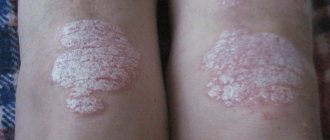The presence of a normal menstrual cycle indicates the good condition of the reproductive organs. If your period loses stability or intensity, this indicates the presence of a tumor inside the uterus or ovaries that is responding to hormones. At the “Other Gynecology” clinic, gynecologists will give a woman an accurate answer to the question whether a cyst can come out with menstruation . The center also provides accurate diagnosis of ovarian cysts to select a treatment method.
Differences in menstruation with ovarian cysts
Most often, an ovarian cyst is detected using a pelvic ultrasound, when the outline of a medium or large cavity appears on the screen. When asked verbally, women often complain about the following changes in their cycle:
- pain syndrome (pain appears before menstruation and during discharge);
- Regularity – menstruation occurs too often or infrequently;
- discharge during the absence of menstruation;
- amenorrhea – complete absence of menstruation for 6 months;
- small discharge after the main menstruation, due to which the cycle increases.
If these changes are combined, then the woman needs to urgently consult a doctor. An ovarian cyst often serves as an obstacle to conceiving a child, and sometimes degenerates into a malignant form.
The connection between types of ovarian cysts and menstruation
When diagnosing ovarian cysts in women of reproductive age, there is no health hazard, since they are of benign origin. But changes in the cycle or intensity of menstruation can suggest the type of tumor:
- Luteal cyst. With it, menstruation becomes scanty, infrequent, and sometimes there is severe aching pain in the lower third of the abdomen or pain in the mammary glands.
- Follicular tumor. Menstruation is often delayed, and then copious amounts of discharge are accompanied by moderate pain that radiates to the lower back.
- Endometrioid cyst. Menstruation becomes frequent, but is scanty. Pain in the lower abdomen does not stop even during the absence of menstruation. Sometimes intermenstrual discharge appears.
To identify the type of cyst, you need to perform an ultrasound scan at a specific phase of the cycle. For example, functional cysts are not visible after menstruation, but non-functional varieties are visible in any phase of the cycle. As a drug treatment for luteal or follicular tumors, hormonal drugs are used for 3-4 months. The remaining varieties are subject to surgery, during which three small incisions are made and the tumors are excised from the ovaries. After surgery, you need to continue taking hormones.










